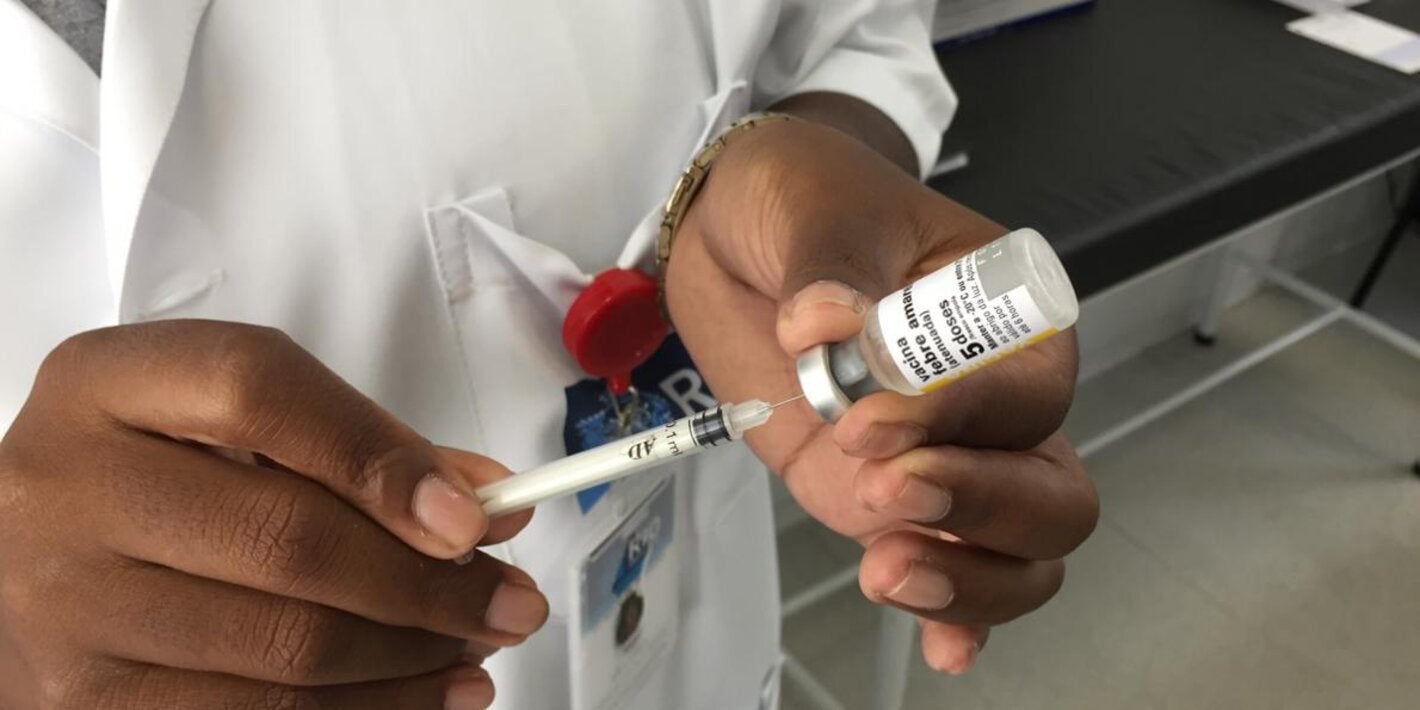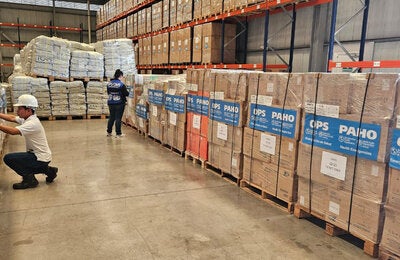
Washington, D.C., 23 February 2018 (PAHO/WHO) – The Pan American Health Organization, Regional Office of WHO for the Americas (PAHO-WHO) reiterated its previous recommendation that international travelers be vaccinated at least 10 days prior to traveling to or visiting areas where yellow fever is circulating.
PAHO/WHO continues to encourage its Member States to take all actions necessary to keep travelers well informed of risks and preventive measures including vaccination. Travelers should also take precautions to prevent mosquito bites and should seek immediate medical attention if they fall ill during or after their trip. Confirmed cases of yellow fever in unvaccinated travelers underscore the need for countries to ensure wide dissemination of these recommendations.
Between January 2016 to January 2018, seven countries and territories in the Region of the Americas have reported cases of yellow fever: Bolivia, Brazil, Colombia, Ecuador, French Guiana, Peru and Suriname. Brazil has notified the largest number of yellow fever cases during this period, with cases being recorded in areas where virus circulation had not been observed in several decades, including in the states of São Paulo and Rio de Janeiro.
The World Health Organization (WHO) recommends vaccination for international travelers to 21 Brazilian states, considered to be at risk for yellow fever transmission, including the states of São Paulo and Rio de Janeiro. The determination of new areas considered to be at risk for yellow fever transmission is an ongoing process, which WHO closely monitors and provides regular updates. For more information on yellow fever updates, visit this link.
Vaccination campaigns in Brazil
Brazilian health authorities have been conducting mass vaccination campaigns since 2017, shortly after the yellow fever outbreak began. More recently, however, Brazil launched a mass vaccination campaign in the states of São Paulo, Rio de Janeiro and Bahia targeting more than 23.8 million people. All of these campaigns are in addition to routine yellow fever vaccination initiatives that are regularly undertaken in the country.
Sylvatic yellow fever outbreaks occur periodically in wild monkeys and are known as epizootics. In these epizootics, the yellow fever virus is transmitted to monkeys by forest dwelling mosquitoes such as Haemagogus and Sabethes. Humans who are exposed to these mosquitoes can become infected if they are not vaccinated.
In the current outbreak in Brazil, all human cases of yellow fever have been linked to Haemagogus andSabethes mosquitoes. Additionally, these epizootics have been observed in ecosystems near cities and in forest corridors within urban areas.
Urban transmission of yellow fever virus occurs when the virus is spread from human to human by the Aedes aegypti mosquitoes. The last documented outbreak of urban yellow fever in Brazil was recorded in 1942.
Yellow fever is an acute viral hemorrhagic fever that can result in death. It is preventable with a vaccine that is safe, effective and accessible.
Links
— Epidemiological update on yellow fever (16 February 2018)
— Recommendations for international travelers
— PAHO/Brazil
— PAHO/Yellow fever



